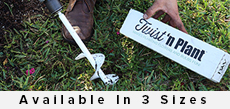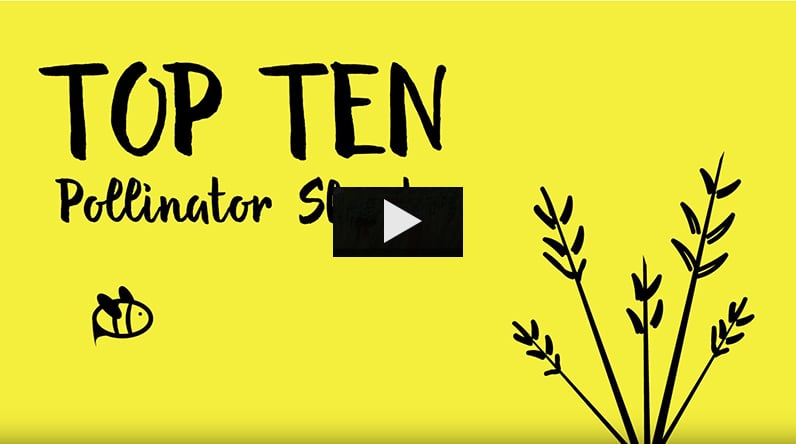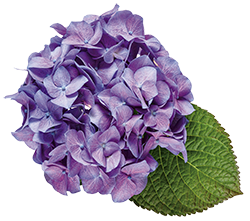Shrubs 101
A guide to growing gorgeous shrubs in your garden
Double Play Doozie® spirea. Photo by: Proven Winners.
Shrubs play many roles in the garden. Whether you want to maintain structure, provide winter interest, bring color in spring and summer, brighten your garden with fall colors, or create privacy, there’s a shrub that can do the job.
On this page:- POPULAR SHRUB PLANT LISTS
- SHRUB BASICS
- HOW TO CHOOSE THE RIGHT SHRUB
- HOW TO PLANT SHRUBS
- GROWING SHRUBS IN CONTAINERS
- SHRUB CARE TIPS
- POPULAR SHRUBS
- VIDEO: TOP 10 SHRUBS FOR POLLINATORS
POPULAR SHRUB PLANT LISTS

A month-by-month guide to the best blooming bushes.

15 landscape shrubs that keep their leaves all year.

Beautify your yard with these reliable shade-tolerant shrubs.

Design for privacy using shrubs as hedging or screening.

Add year-round color to your yard with these smaller-sized and dwarf evergreen shrubs.

Add small or dwarf flowering shrubs to your landscape for seasonal color.

25 carefree shrubs for years of interest in the landscape.

Plant these shrubs in your landscape to reduce damage caused by deer.

Add instant color to your landscape with these fast-growing shrubs.
SHRUB BASICS
What is a shrub?
Shrubs are woody plants that have several main stems. They can be either deciduous (go dormant and drop their leaves in winter) or evergreen (don’t go dormant and keep their leaves through winter).
What is the difference between a shrub and a bush?
Horticulturally speaking, there isn’t a definite difference between a shrub and a bush. It tends to boil down to regional preferences — some consider plants grown in gardens as shrubs and those in the wild as bushes; others say the leaves of bushes almost always go to the ground, while shrubs stand taller.
What is the difference between a shrub and a tree?
Shrubs are generally much smaller than trees, usually have a more rounded shape and thinner stems. Many shrubs can be trained into a tree shape with a single main stem — like this hydrangea tree, and some trees can be grown in shrub form with multiple trunks — such as crape myrtles.
Zones:
Make sure the shrub you are planting is compatible with your growing zone. If you’re growing a shrub in a container, it’s a good idea to get one that is cold hardy to one zone lower because the roots have less insulation than if they were in the ground.
Sun or shade:
Know the location you are planting in and choose accordingly. Shrubs labeled full sun need at least 6 hours of direct sunlight each day, those labeled part shade should get 4 to 6 hours, and ones labeled full shade should only receive a few hours of morning sun. Don’t cheat flowering shrubs out of their sun, they won’t flower as well.
Soil:
Most shrubs are fairly adaptable to wide range of soil as long as it drains well.
HOW TO CHOOSE THE RIGHT SHRUB
Mature size:
Don’t choose a shrub that will outgrow its space because it’s only going to create more work for you down the road. Keep in mind that shrubs are fairly permanent elements of a garden and can be difficult to move. Dwarf or compact varieties are great choices for most residential landscapes. But, dwarf doesn’t always mean small, it just means that it will be smaller than typical for its species. Also, dwarf shrubs may actually cost a little more (they tend to grow slower), but the right plant for the space will save you time and money in the long run.
Structure:
Look for plants with good structure. A shrub with lots of branching and symmetrical growth is a better choice than just picking the tallest one of the bunch.
Roots:
It’s ok to take a peek at the roots by gently easing the plant out of the container. A good sign is a lot of healthy white or light brown roots. A plant that is well-rooted will hold onto the soil, and one that is root bound will have roots circling around the perimeter.
Flowers:
While it’s tempting to buy the pretty shrub that’s full of flowers, many times the better choice is the one that’s full of flower buds. This way, you’ll get to enjoy the flowers from bud to full bloom once it’s in your garden.
Overall health:
Look for healthy green leaves — unless, of course, it’s a yellow-leafed variety. The soil should be moist, and there should be no obvious signs of pests or weeds.
Learn about plants, get garden advice, design inspiration & more in our weekly newsletter.
PLANTING SHRUBS
When to plant shrubs:
Shrubs can be planted almost any time of year, although spring and fall are typically the best times to plant.
- Warm climates: Plant early enough in spring so roots have enough time to adjust before temperatures rise. If planting in summer, or if a rogue heat wave hits, be extra attentive about watering newly planted shrubs. Planting in fall allows shrubs time to prepare for a spring growth spurt.
- Cold climates: Plant in spring once the ground thaws and temperatures start to warm up. Water diligently if planted in summer; and in the fall, plant early enough so they can settle in before the ground freezes.
How to plant shrubs:
Dig a hole about twice the width and just as deep as the size of the container. Carefully remove the plant from the pot and loosen the roots with your fingers. Place the plant in the hole and backfill with the native soil that was removed, firming the soil into place as you go. The top of the root ball should be covered by about ½” of soil when finished. Cover with a 2-3” layer of shredded bark mulch.
GROWING SHRUBS IN CONTAINERS
Broaden your scope when planting your containers by using flowering shrubs.
Container planting is a great way to extend your garden and bring it right onto your patio or closer to your home. When choosing shrubs for containers, there are a few things to keep in mind:
- Compact or dwarf varieties are better suited for container growing. However, if you’d like to use a shrub that may eventually be too big for a container, consider this as a temporary home before adding it to your landscape.
- It’s a good idea to use plants that are hardier to one zone colder because the roots will have less insulation in winter than if they were planted in the ground.
- Just because deciduous shrubs go dormant in winter, it doesn’t mean they don’t need water — especially in containers where soil dries quickly. If natural precipitation is lacking, you will want to water them occasionally.
- Training smaller shrubs into tree forms allows you room to plant smaller annuals around the base.
SHRUB CARE TIPS
- Deep but less frequent watering encourages a plant to establish a good root system.
- Water regularly through the first year. Established shrubs do well with much less frequent supplemental watering.
- Applying a controlled-release fertilizer into the bottom of the planting hole at the time of planting is a good idea.
- Apply fertilizer to established shrubs in early spring. Fertilizer helps plants be more vigorous, making them more resistant to pests and diseases.
- Most landscape shrubs don’t need as much pruning as you may think, and no plant has died from a lack of pruning.
- Knowing when your plant blooms is the best guide for when to prune. As a general rule: If it blooms early in the season (forsythia, lilac, azalea, etc) prune right after flowering. If it blooms later in the season (roses, butterfly bush, rose of Sharon, etc) prune in late winter to early spring.
- Prune re-blooming shrubs after the first round of blooms to encourage more blooms the second time around.
- Prune evergreens (boxwood, holly, arborvitae) in spring after new growth has emerged.
- More on pruning shrubs: How, When, & Why to Prune Your Shrubs and Seasonal Shrub Pruning Guide.
POPULAR SHRUBS

Get growing details, including pruning and design tips, how to change their color and which type is best for your garden.

Grow this easy-care shrub for its cheerful spring bloom and fabulous foliage.

Showy flowers and colorful foliage brighten up the garden from spring well into fall.

Planting and care information for these classic evergreen shrubs.

Growing tips for this intoxicating shrub with beautiful blooms.

Add carefree color and year-round appeal to your landscape with this stellar shrub.

For effortless color, add carefree landscape roses to your garden.

Growing and care tips for these versatile, low-maintenance garden shrubs.

Bring the tropics to your garden with Hibiscus syriacus that can overwinter even in temperatures below zero.
More popular shrubs:
- Chokeberry
- Butterfly Bush
- Oleander
- Juniper
- Red Twig Dogwood
- Azalea
- Abelia
- Beautyberry
- Bluebeard
- Cinquefoil
- Summersweet
- Deutzia
- Elderberry
- Esperanza
- Forsythia
- Fothergilla
- Holly
- Indian Hawthorn
- Sweetspire
- Fringe Flower
- Mock Orange
- Smokebush
There are many more shrubs featured throughout the site. Use the search bar above or explore the popular plant lists.
Top 10 Shrubs for Pollinators
Are you looking to attract pollinators to your garden?
Order shrubs for delivery from Proven Winners.







